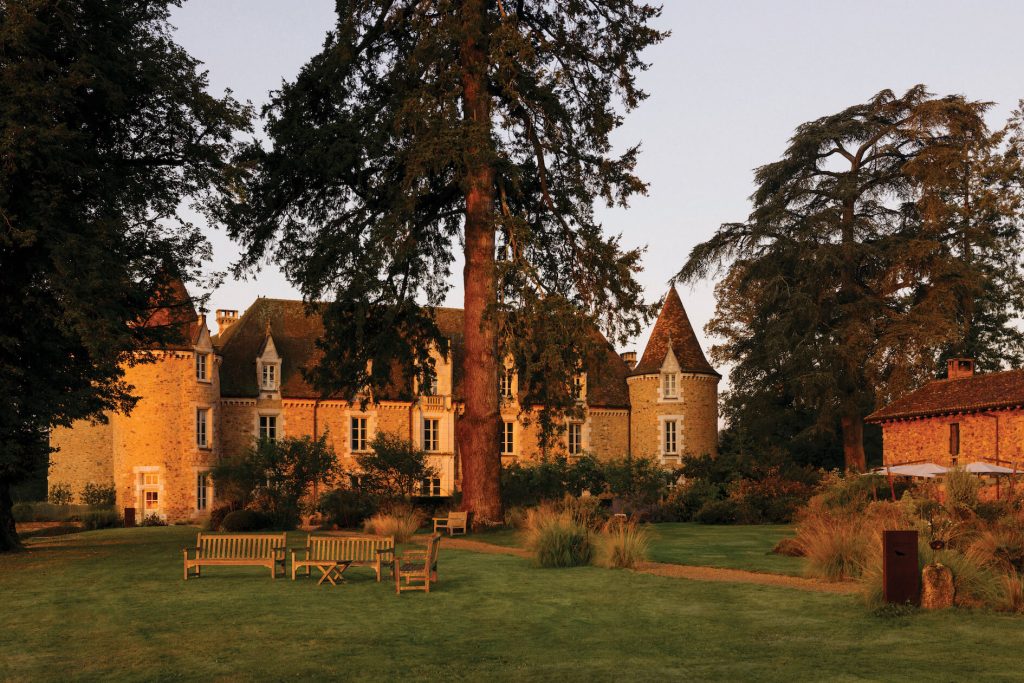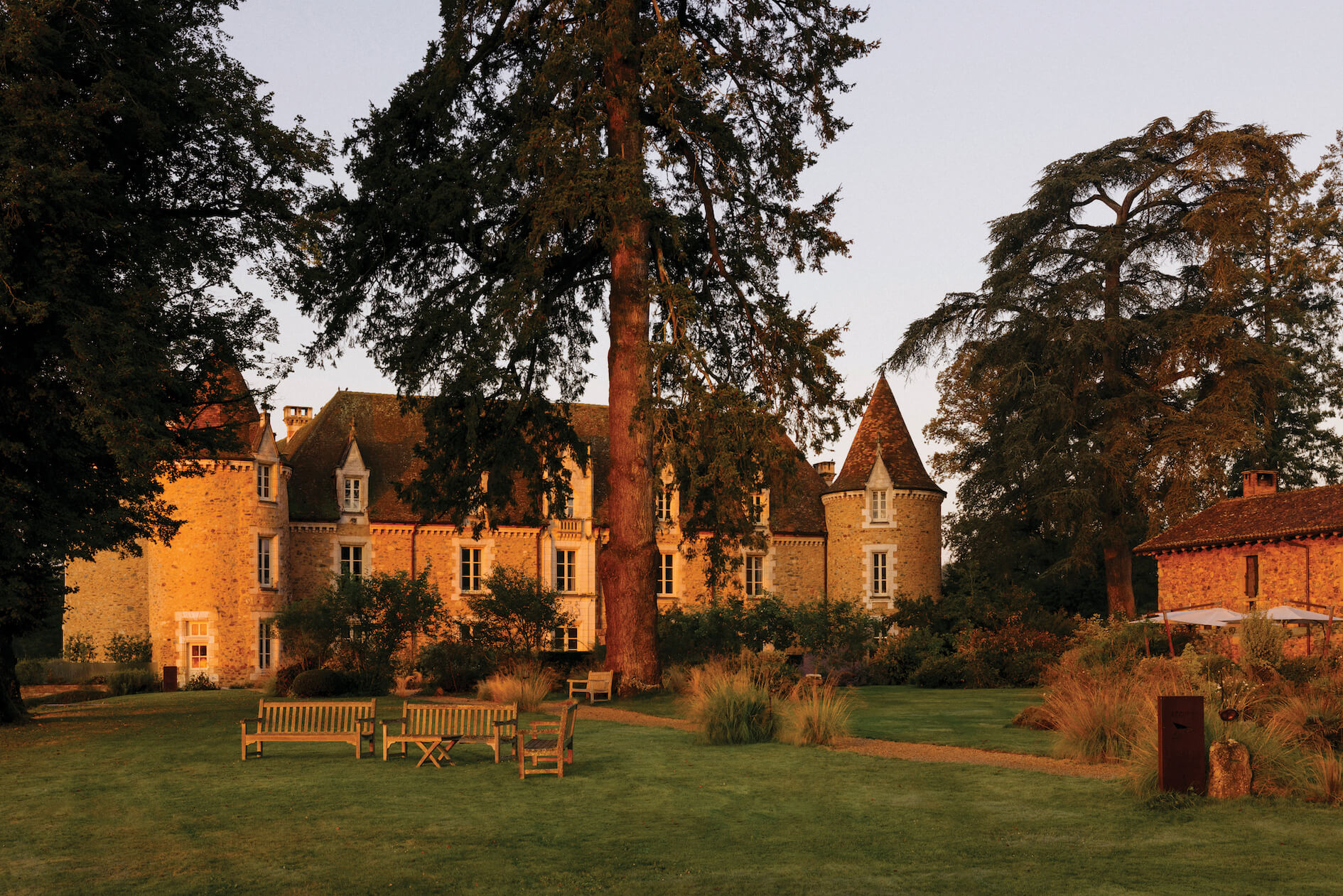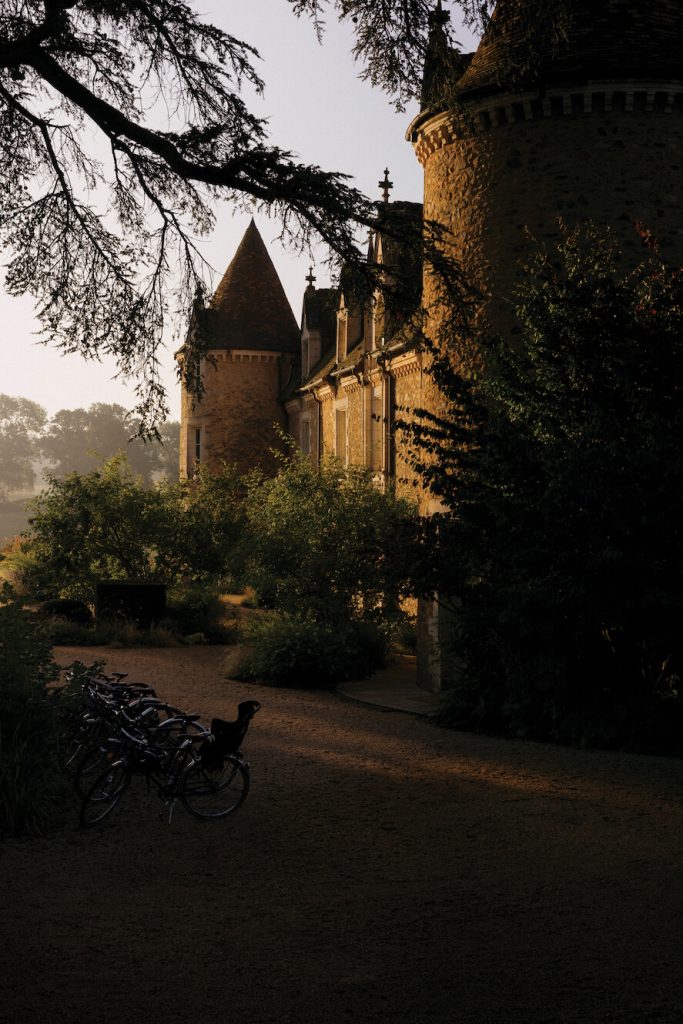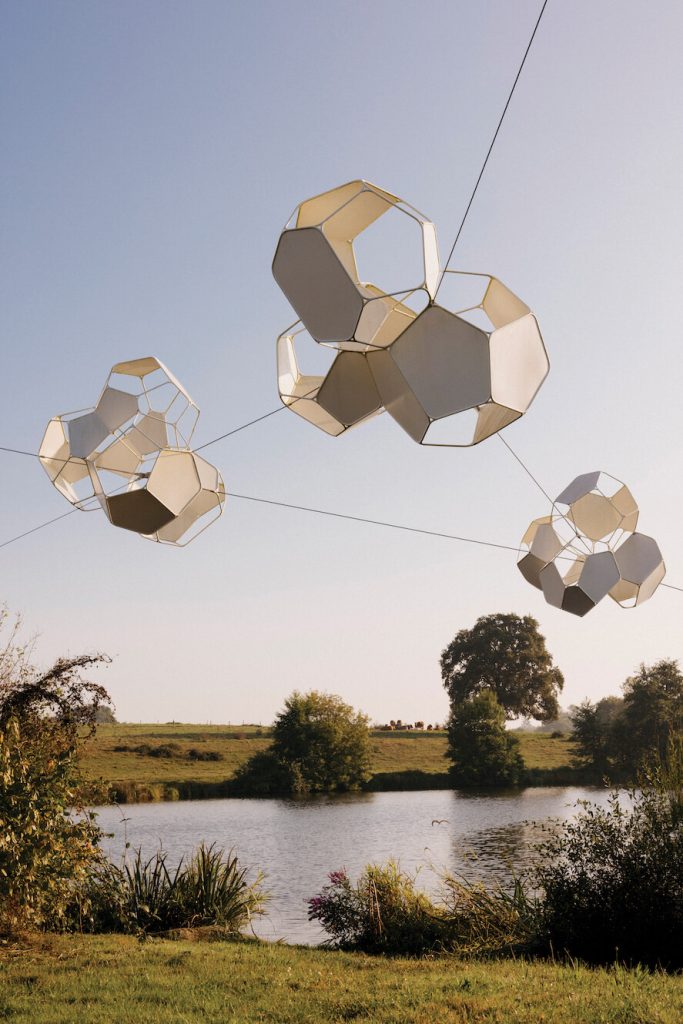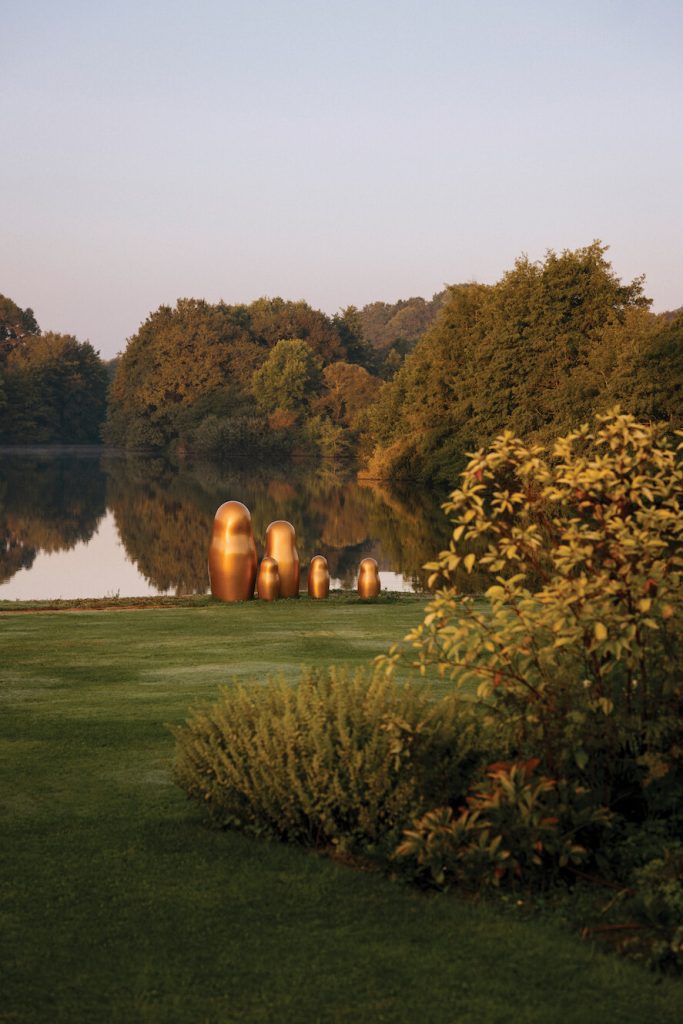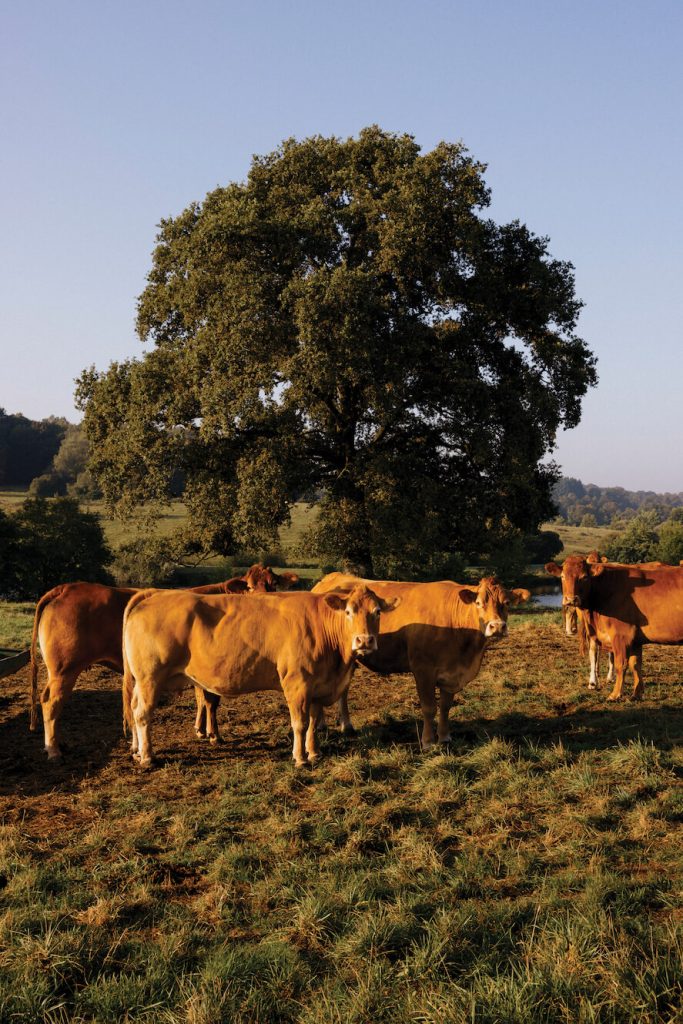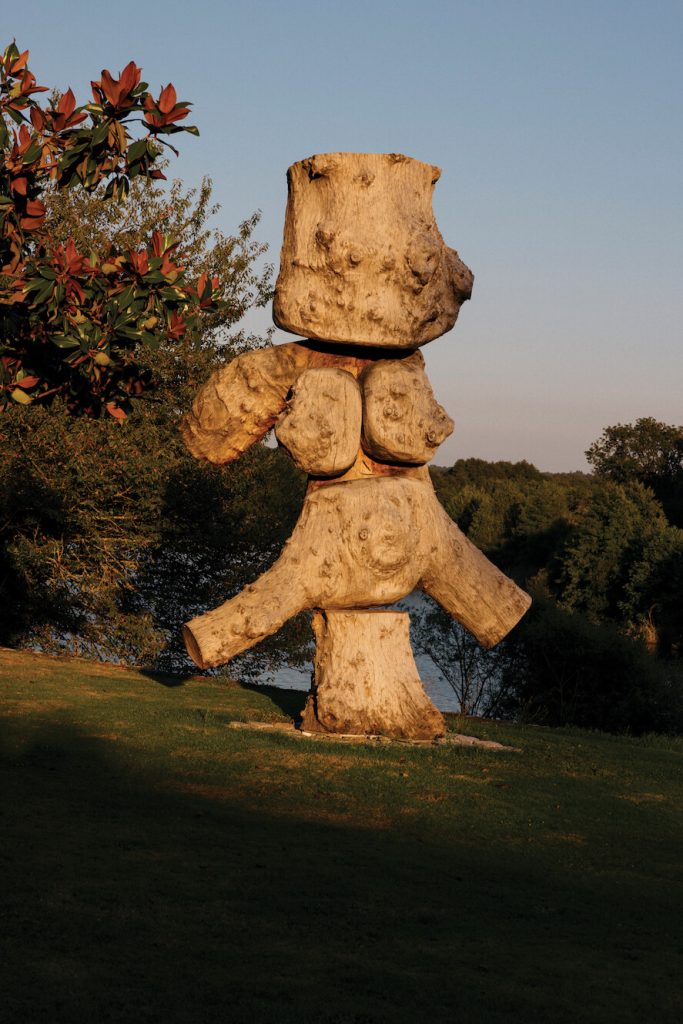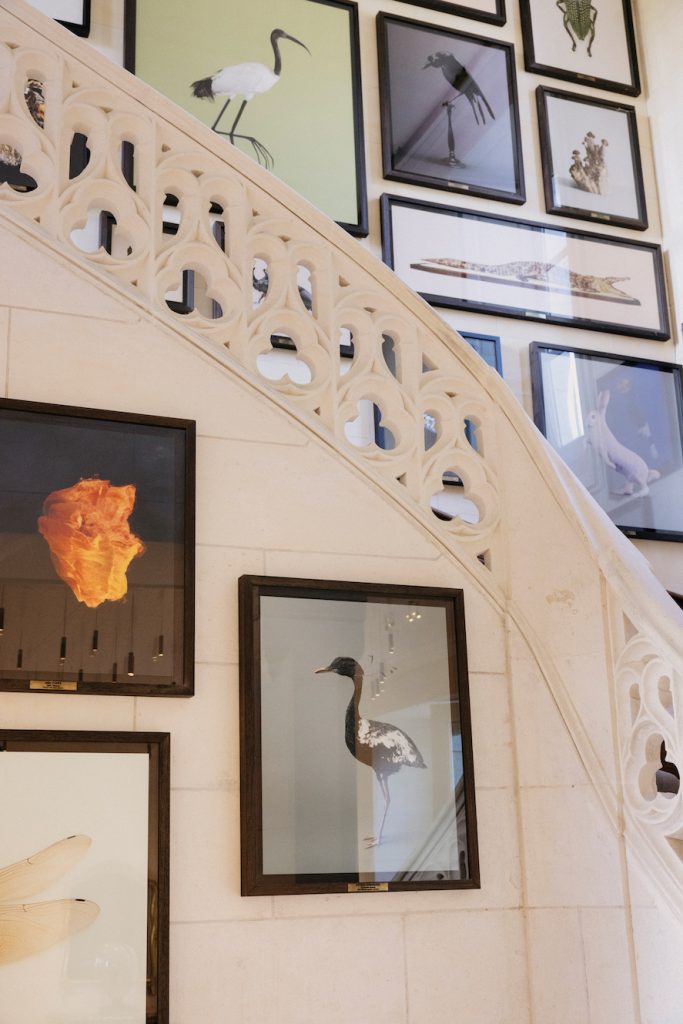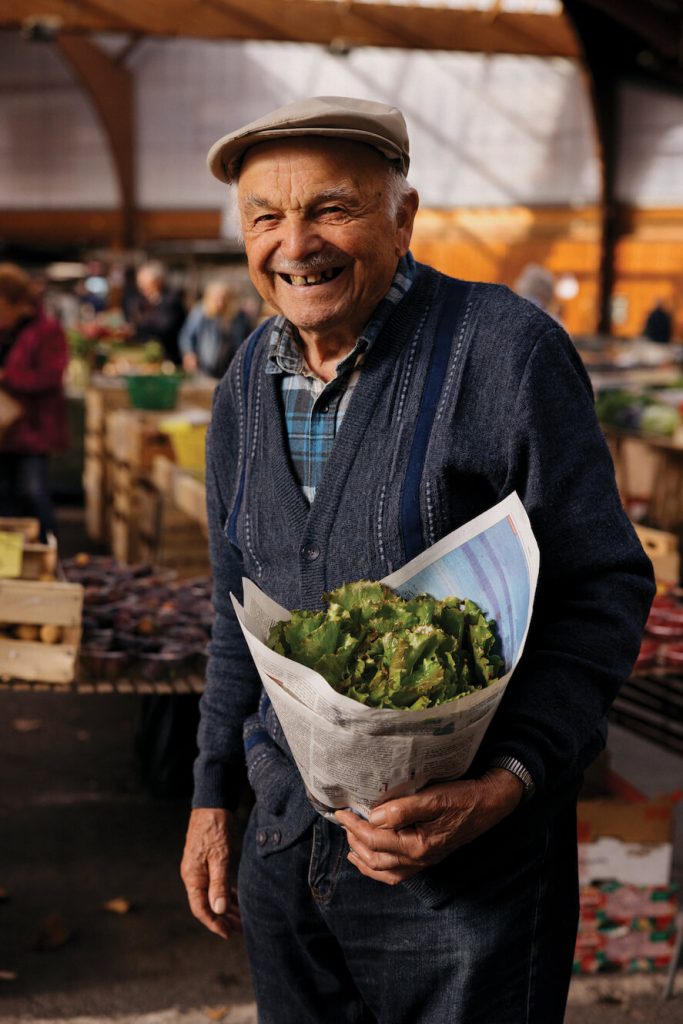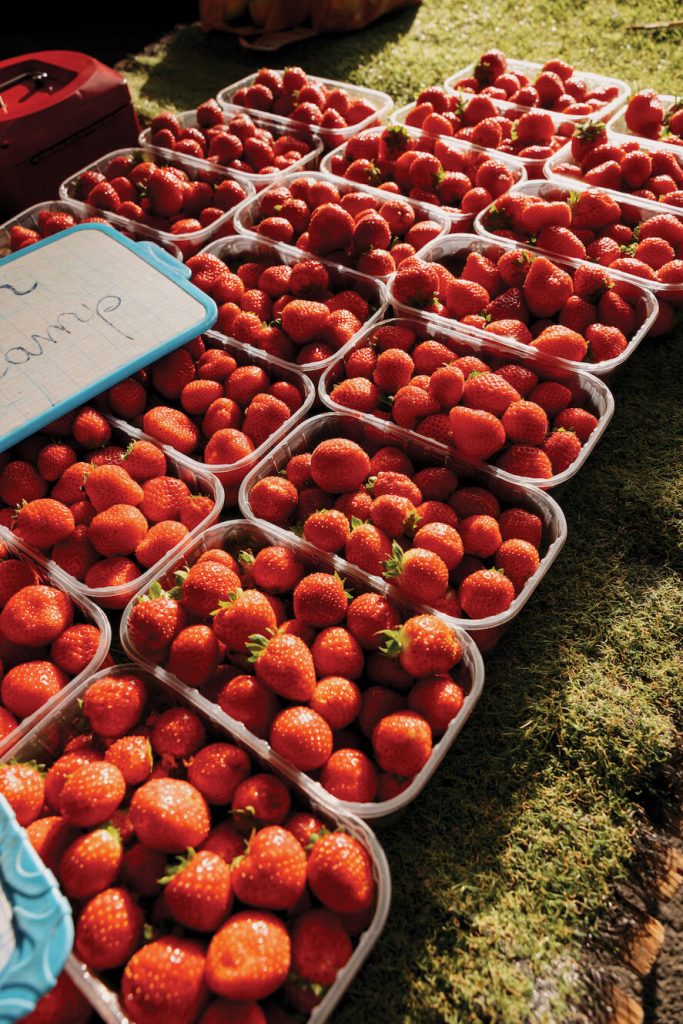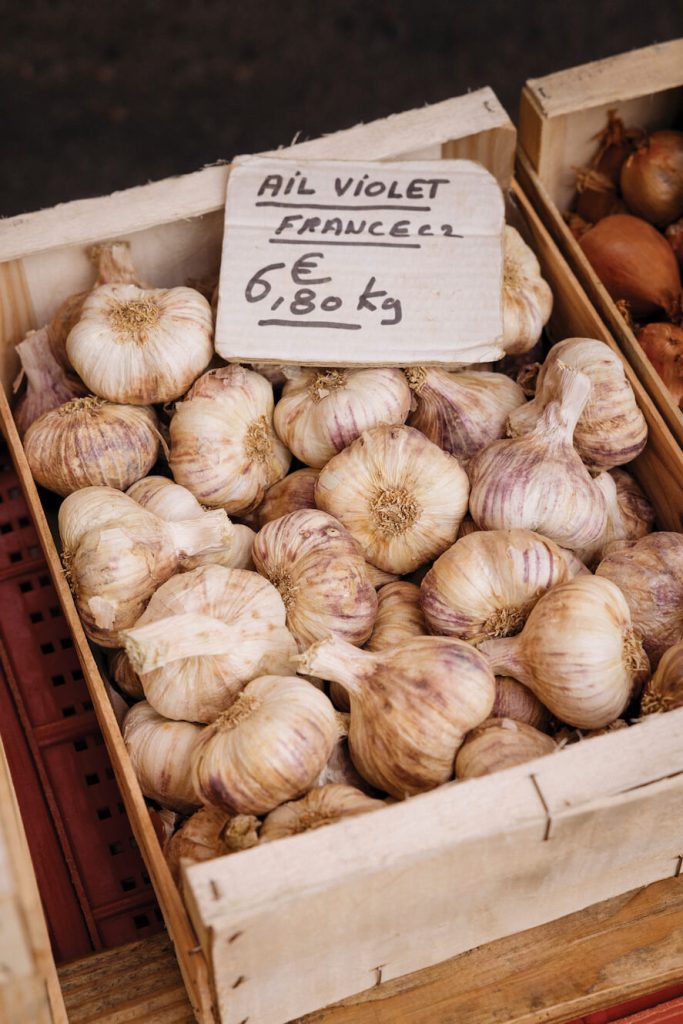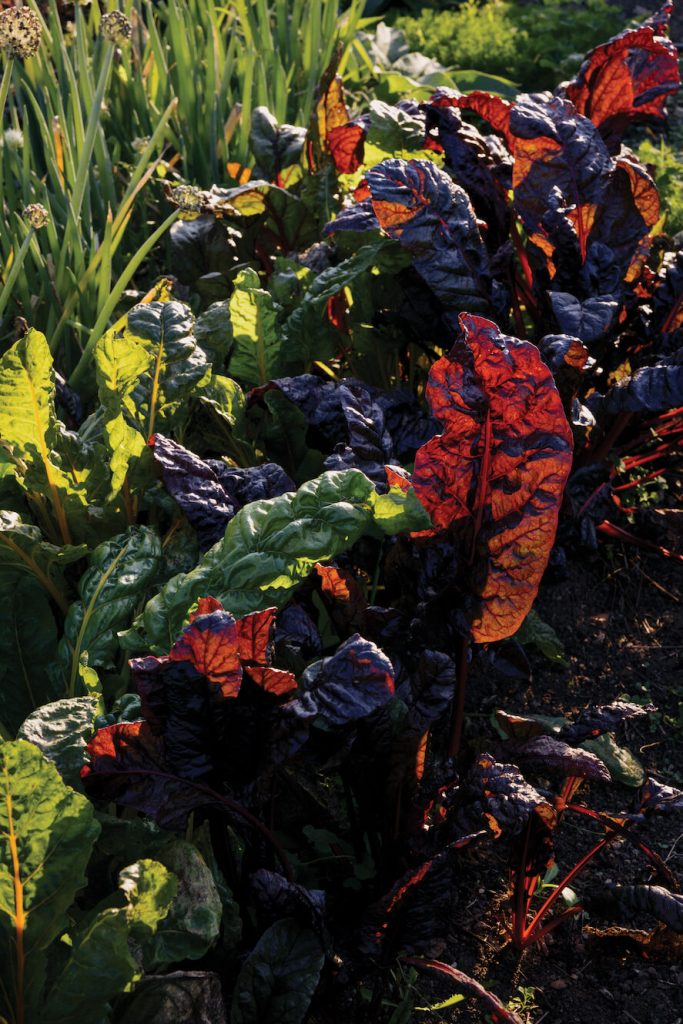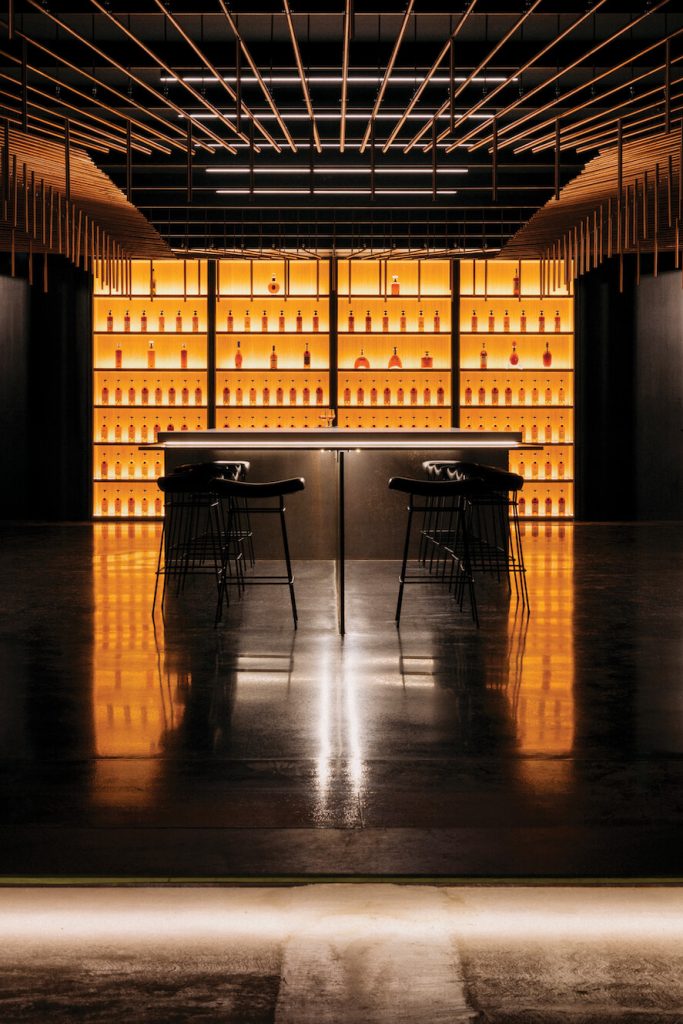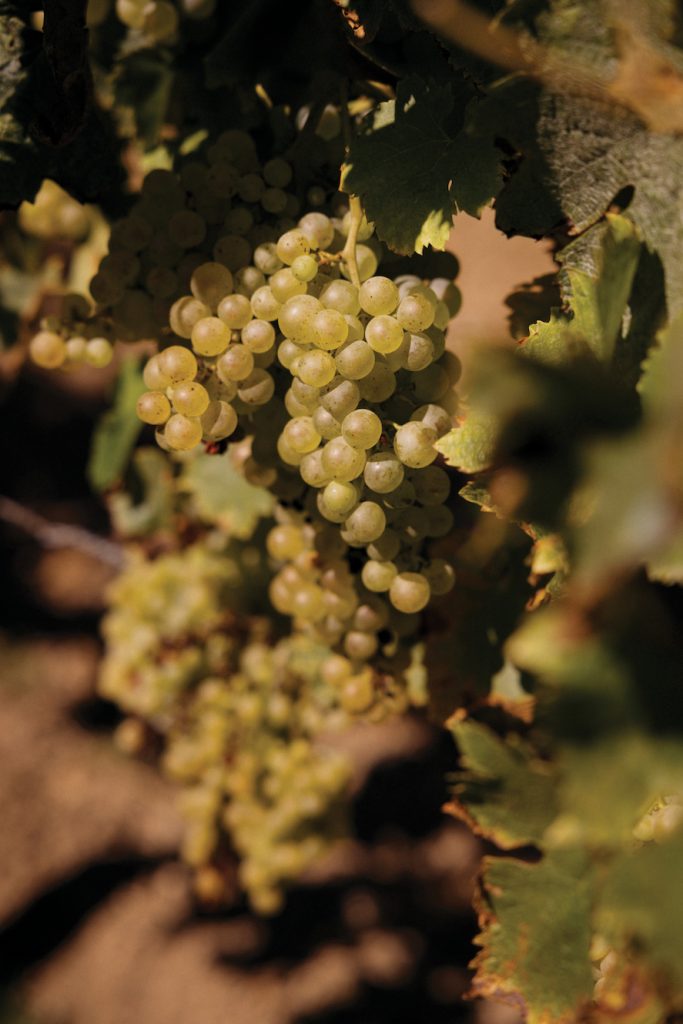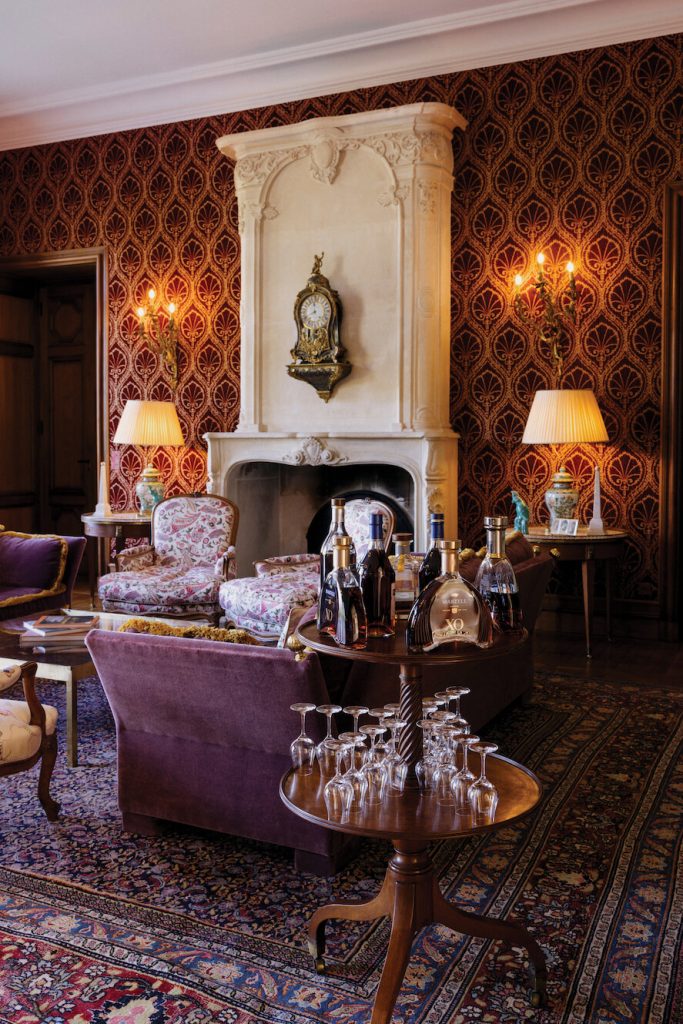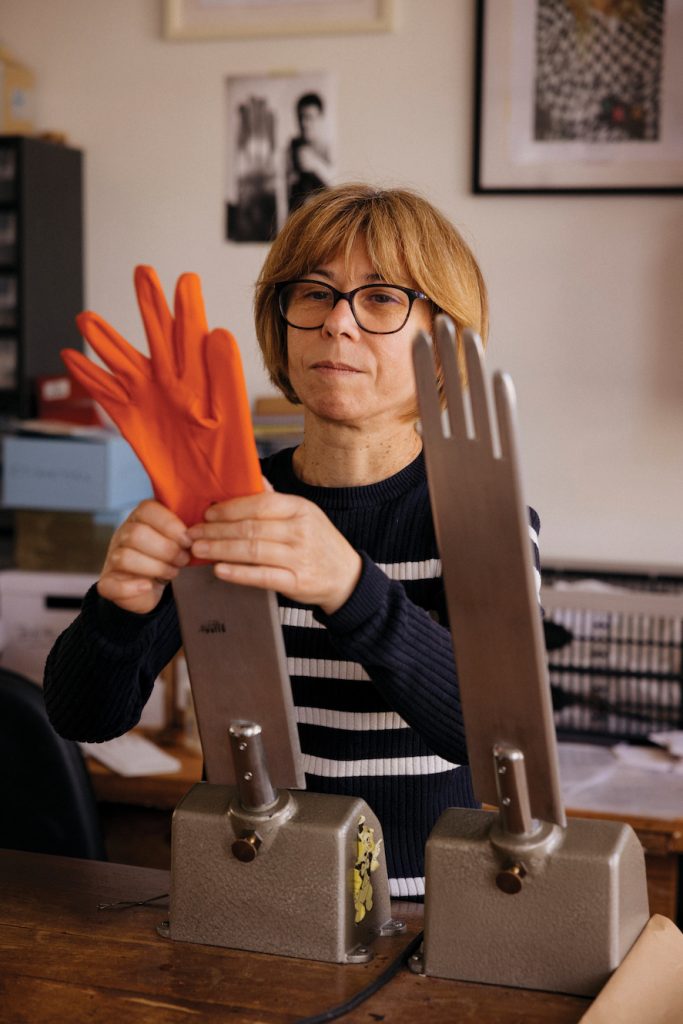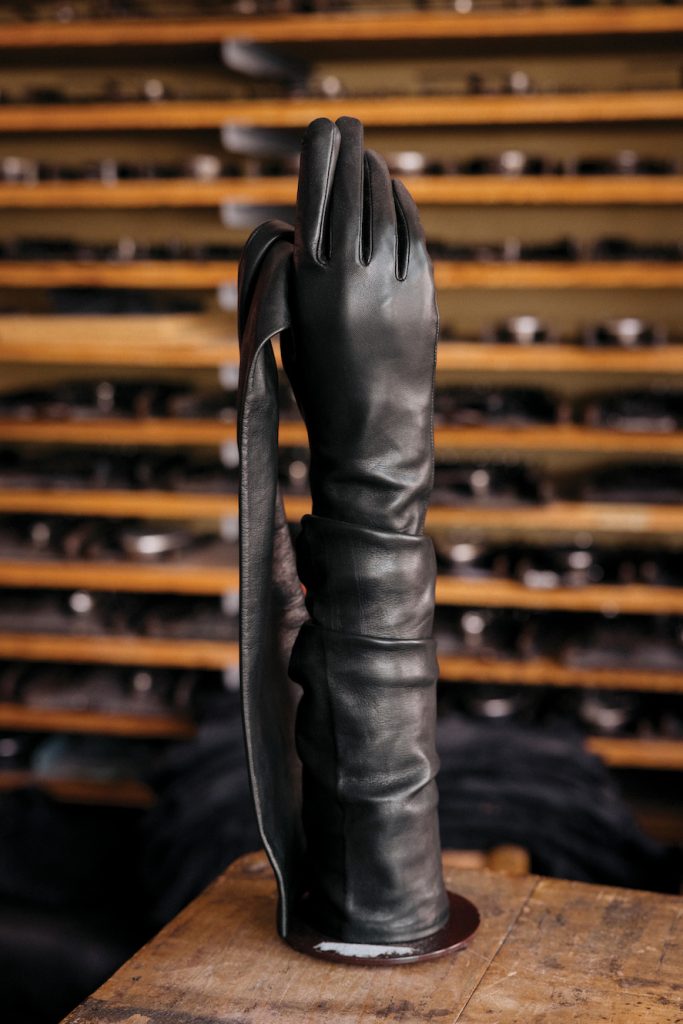Deep in the heart of the bucolic Charente region, rolling hillsides give way to a one-of-a-kind chateau: Domaine des Etangs. The grand estate has stood for more than seven centuries, since the knights of Chasteignier de la Roche-Posay built its fortified walls. But for Garance Primat, it is a storybook castle where southwest France’s many treasures—art, craft, nature, cuisine—converge.

Primat, a French entrepreneur and prolific art collector, grew up on Domaine des Etangs’ vast grounds, and as a child, she and her seven siblings roamed its 2,500 acres, tending to the vegetables in the gardens, feeding the animals on the farm, and exploring the old castle, barns, and cottages.
Today, Domaine des Etangs, Auberge Resorts Collection, invites all who pass through its massive stone doors to experience the quintessential French simplicity of Primat’s upbringing—La France Profonde, as locals call it, an authentic and unspoiled France of artisans and makers, shepherds and farmers.

With Domaine claiming pride of place in the center of this region’s abundant treasures, every day promises a new journey. An hour west lie the generational estates of Cognac, where the commune’s namesake spirit has been artfully blended since the 1500s. Due east, among Limousin’s grazing farmlands, sit the workshops of Agnelle—purveyer of fine gloves to luxury fashion houses the world over—and, just beyond, the celebrated porcelain maker Bernardaud. Travel south for a gastronomic discovery in Brive-la-Gaillarde, where local purveyors convene to peddle delicacies like foie gras and Black Périgord truffle, pur brebis and Roquefort. And a day filled with art lies just outside (and even within) the walls of Domaine des Etangs: Tomás Saraceno’s cloud sculptures hovering over a tranquil lake, Vincent Fournier’s utopic botanicals in the hotel’s lobby.
Whatever the path taken, it leads to new inspirations, new flavors, and new connections to the age-old traditions of La France Profonde and the values of Primat’s beloved domaine.

Art, Art, Everywhere
Primat transformed Domaine des Etangs’ dairy house into a formal gallery space where she regularly curates exhibitions, but world-class art can be found throughout the property—even in the rooms and among the bucolic grounds.
Caroline Corbasson’s Touch (Deep field), exhibited in the Salon Femmes.


Taste of Tradition
The flavors of southwest France are wildly diverse, mouth-wateringly fresh, and, above all else, always delicious. The countryside’s Limousin lean beef is legendary, its produce magical. And then there’s the French staples: tangy Saint-Nectaire and creamy Bleu des Causses cheeses and flaky croissants by the dozen.

Spirit of the Past
Whiskey’s smoother, softer, subtler cousin was born in the 16th century, devised by Dutch colonists whose French wine soured on the long journeys back to their homeland. Though their distillation process left much to be desired, Cognac locals refined the spirit, barrel-aging it and elevating its characteristics as only the French could do. Today, the brandy’s birthplace is a worthy pligrimage for any spirit drinker. Maison Martell, the oldest of the great Cognac houses, embodies the tipple’s venerable past, as well as its modern evolution, with a Renaissance lounge, a sleek tasting room, and centuries-old vines.
Maison Martell’s 300-year-old estate.


Trade Secrets
A visit to Limousin reveals the inner workings of two of France’s time-honored ateliers. In the medieval town of Saint-Junien, Agnelle has been a fashion house darling for nearly a century, hand-crafting gloves for the likes of Christian Dior and Yves Saint Laurent. A visit to the circa-1937 workshop offers a glimpse of the atelier’s careful process using the finest Limousin leather—and a chance to make a coveted purchase straight from the source. Thirty minutes east of Saint-Junien lies Limoges, the birthplace of Bernardaud, the heritage ceramics maison with a 161-year legacy. The house has crafted porcelain for French nobility, Indian royalty, and contemporary icons such as artist Jeff Koons and winemaker Robert Mondavi.
